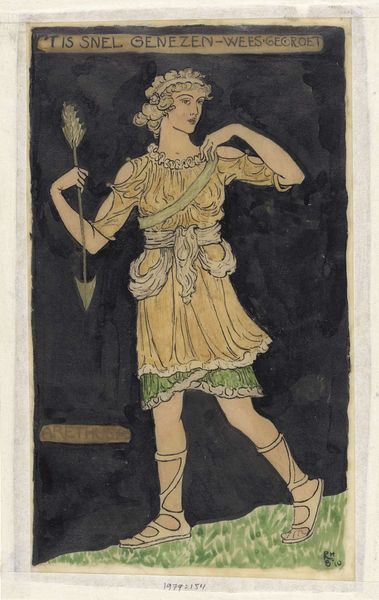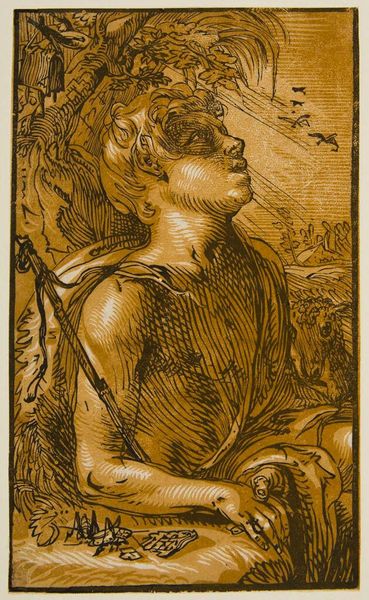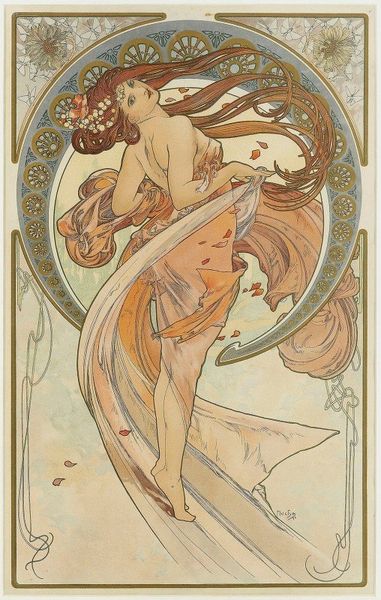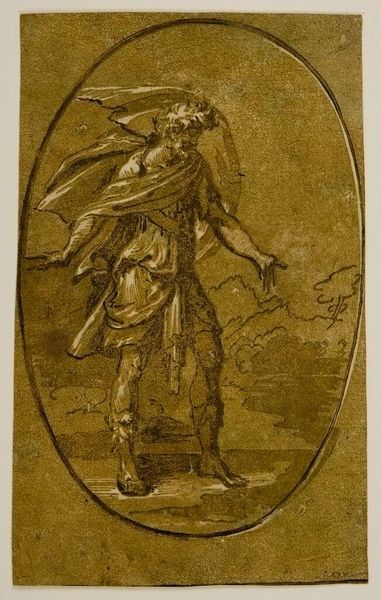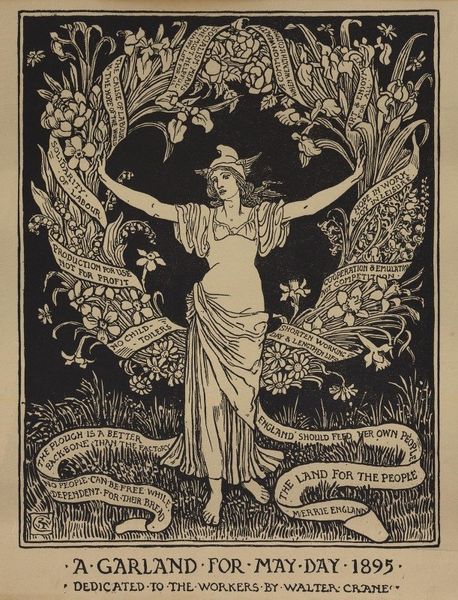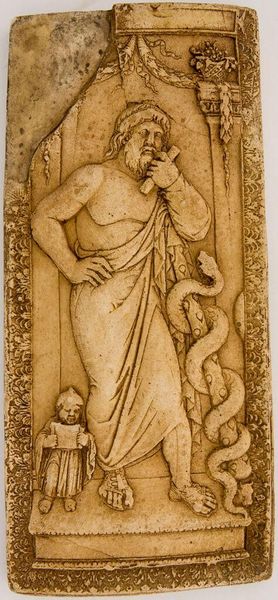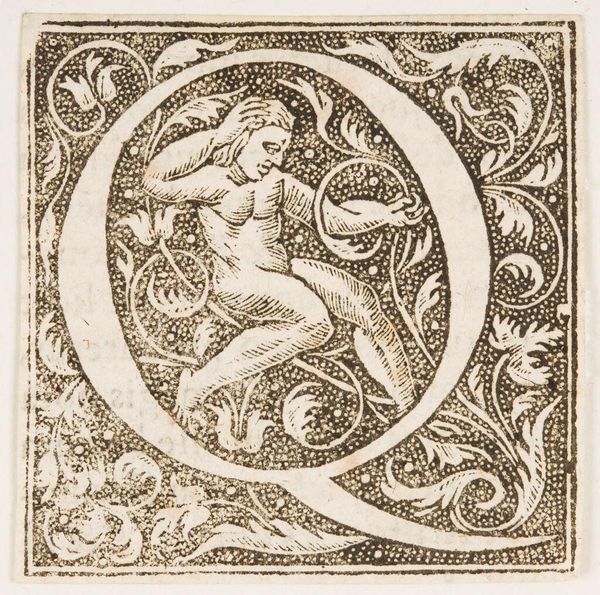
textile, sculpture
#
landscape
#
textile
#
figuration
#
text
#
female-nude
#
sculpture
#
romanticism
#
decorative-art
#
nude
#
decorative art
Dimensions: L. 19 1/4 x 22 inches 48.9 x 55.9 cm
Copyright: Public Domain
Curator: Let's discuss this intriguing chair cover, a textile work created by Jean Démosthène Dugourc between 1792 and 1802. You can find it at the Metropolitan Museum of Art. Editor: Oh, I'm immediately drawn to the figure. There's something about the way she's draped that suggests movement, almost like she's dancing right off the fabric. It feels both classical and somehow a little mischievous. Curator: Indeed, the piece is steeped in Neoclassical and Romantic ideals. The female figure, a nude, alludes to classical sculpture and mythological narratives, a common visual trope used to evoke themes of beauty, nature, and ideal form. What do you make of her positioning against the black ground? Editor: It's stark, isn’t it? The high contrast throws her forward, heightening the drama. Like a spotlight in a theatre of the mind. It makes me think about the expectations placed on women, how they're often presented—posed, really—for consumption. But there’s something so free about her spirit, she seems to subvert any static expectation. Curator: I agree. Dugourc’s use of figuration isn't merely decorative; it participates in larger conversations around female representation and societal roles during the late 18th century. Considering that this was part of a chair cover, the piece would have literally been sat upon! Perhaps that adds another layer to interpreting her place in the world. Editor: Ouch, literally sat upon? I imagine the owner of the chair settling in with the news from revolutionary France... and there beneath them, a silent symbol of beauty, sacrifice, of resilience. It all just gives me chills, but I think maybe the chill is also sort of delicious too? Curator: A very tactile symbol, one might argue. What this textile fragment brings to light is that decorative arts should not be seen merely as pretty things. Instead, they offer insights into broader societal values and power dynamics. Editor: Precisely! It seems she whispers volumes across the centuries. Curator: Absolutely, leaving us to consider how even the most utilitarian objects can hold profound stories about identity and the complexities of cultural ideals.
Comments
No comments
Be the first to comment and join the conversation on the ultimate creative platform.
